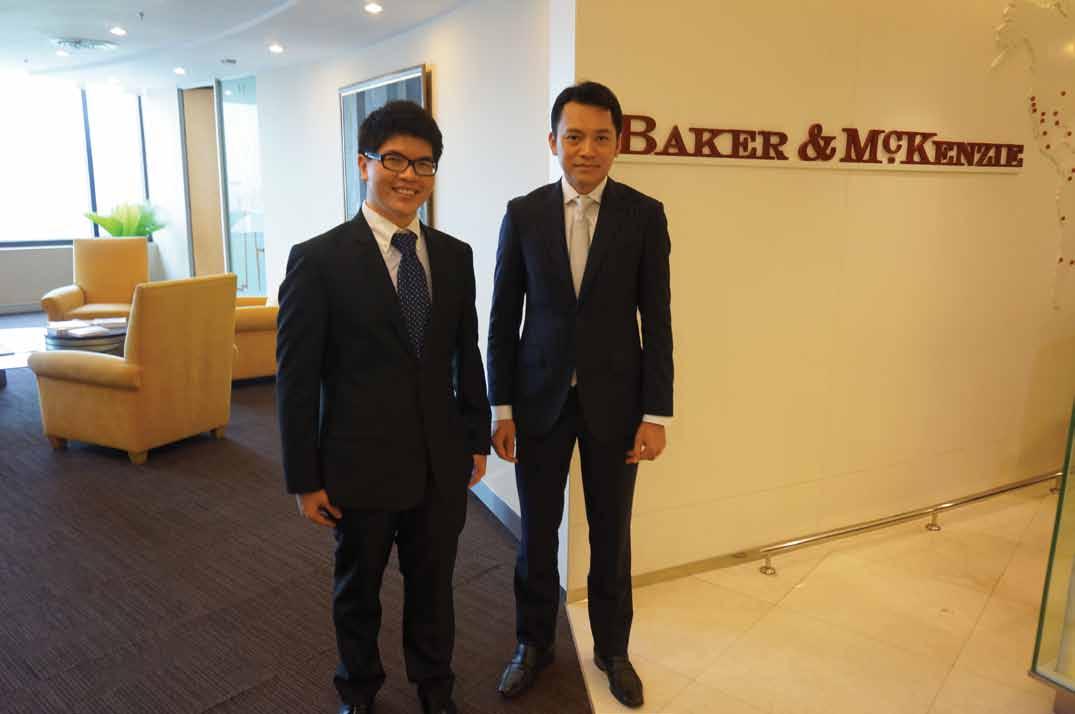
16 minute read
Economy & Real Estate Market Overview • Economic Overview
ECONOMIC OVERVIEW
Global
Advertisement
According to recent figures from the World Bank, Thailand’s gross domestic product (GDP) is set to grow approximately 4-5% in 2013, following a 6.4% rise the previous year. This compares favorably with the outlook for the global economy, which the World Bank sees expanding 2.2% this year. The outlook is similar for the United States, whose GDP is expected to grow 2% in 2013.
For the 34 member countries of the Organization for Economic Cooperation and Development (OECD), the World Bank forecasts combined growth of 1 .1% in 2013, while Singapore’s economy is expected to gain 2% this year.
Thailand has also succeeded in keeping consumer price growth in check, with an inflation rate of 3% in 2012, compared with the global average of 3.9% according to the World Bank.
GDP Growth Rate : 2012
China 7.80%
Japan 2.00%
Taiwan 1.26%
Thailand 6.44%
India 3.99%
Philippines 6.59%
Vietnam 5.02%
Malaysia 5.61% Singapore 1.32%
Indonesia 6.23%
Key Economic Indicators : Asia
Country GDP at 2012 GDP Growth CPI 2012 Unemployment GDP per capita at (Billion USD) in 2012 Rate Q2/13 2012 (Units USD)
China India Indonesia Japan Malaysia Philippines Singapore Taiwan Thailand Vietnam 8,227 1,825 878 5,964 304 250 277 474 366 138 7.8% 2.7% 4.1% 4.0% 9.3% 9.9% 6.2% 4.3% 6.1% 2.0% 0% 4.1% 5.6% 1.7% 3.0% 6.6% 3.1% 7.0% 1.3% 4.6% 2.0% 1.3% 1.9% 4.2% 6.4% 3.0% 0.7% 5.0% 9.1% 4.5%
6,076 1,492 3,592 46,736 10,304 2,614 51,162 20,328 5,679 1,528
Source : IMF, data as at end of Quarter 2, 2013
Key Economic Indicators : Thailand
Growth %
Q1/12 Q2/12 Q3/12 Q4/12 Q1/13 Q2/13
(Y-o-Y)
(Q2)
0.4 4.40 3.10 19.10 5.30 2.8 -
3.4 2.50 2.94 3.23 3.09 3.16 -
53,803 56,686 59,280 56,415 56,181 55,563 - 1.9% 52,630 55,203 55,650 56,900 56,402 56,000 1.5% 1,173 1,483 3,630 -485 -221 -497 -
30.84 31.75 30.78 30.61 29.6 31.1 2% 40.64 40.16 39.26 39.79 39.4 40.97 -2% 7.16 7.13 7.13 7.01 7.00 7.00 0.13%
75.4 77.40 77.7 79.0 83.5 81.6 5%
Key Indices 20,873 31,559 24,099 33,974 17,200 40,100 27%
123.7 125.4 125.1 124.4 125.7 127.3 2% 103.7 103.8 108.7 106.9 108.5 110.2 6% 110.8 112.8 114.7 113.3 118.4 118.7 5% 128.8 133.7 139.1 136.2 140.9 139.5 4% 130.0 122.2 125.7 129.7 136.3 133.4 9%
Source : BoT, data as at end of Quarter 2, 2013
Southeast Asia
Despite the turbulence of the global economy, according to Nasdaq, in the decade through 2012, the combined GDP of the 10 member countries of the Association of Southeast Asian Nations (ASEAN) grew by an average of 6.5% a year. With a combined GDP of US$2 trillion, ASEAN is now a global economic powerhouse, and the United States’ fourthlargest overseas market.
According to a recent study by global research company IHS, by 2020 that figure could more than double to US$4.7 trillion. Part of the reason for that expansion is the planned commencement in 2015 of the ASEAN Economic Community (AEC). Among its key aims will be the removal of barriers to the cross-border flow of skilled labour, the expansion of free-trade agreements so as to facilitate zero-tariff trade within the community, and the introduction of a range of other economic pacts designed to boost competitiveness on the world stage. The creation of the AEC is expected to cement Thailand’s position as a regional hub for tourism and logistics.
Thailand
As the second-largest economy within ASEAN, the outlook for Thailand is bright. Described by the World Bank as “one of the great development success stories” for its progress in social and economic development, the country remains on an upward trajectory.
In 2012, Thailand ranked 99th on the World Bank’s GDP per capita listings, and 38th on the World
Economic Forum’s global competitiveness charts. While the World Bank has said it expects Thailand’s GDP to grow by 4-5% in 2013 – ranking it among the top achievers within ASEAN – the nation’s GDP per capita is also forecast to make significant gains in the coming years, to almost four times that of Vietnam, and almost double those of Indonesia and the Philippines.
In 2012, Thailand ranked 99 th on the World Bank’s GDP per capita listings, and 38 th on the World Economic Forum’s global competitiveness charts.
Real GDP Growth (% Y-o-Y)
30 25 20
10 5
0 -5
-10
-15
1993 Asian Financial Crisis Global Financial Crisis 2011 Floods
• China • Thailand • Singapore • Japan
1994 1995 1996 1997 1998 1999 2000 2001 2002 2003 2004 2005 2006 2007 2008 2009 2010 2011 2012 2013
Public investment
Much of the impetus for Thailand’s continued growth stems from the government’s commitment to long-term investment in infrastructure and communications. According to figures from the International Monetary Fund (IMF), Thailand’s investment this year as a percentage of GDP is set to reach 30%, outstripping the 24% global average, 19% for advanced economies, 18% for countries in the euro zone, 17% for the US and 15% for the UK. The increased investment will also help to offset the impact of the global economic downturn in China, Europe and the US, which purchase the bulk of Thailand’s exports. According to the Fiscal Policy Office, as a result of the slump, Thailand had a trade deficit in both the fourth quarter of 2012 and the first quarter of this year. Economic growth for the first three months of 2013 was lower than expected at 5.3%, prompting the National Economic and Social Development Board to cut its full-year forecast to a range of 4.2% to 5.2%. According to the World Bank, Thailand’s exports – which accounted for 78% of GDP in 2012 – likely rose 4.5% year on year in the first quarter of 2013, after climbing 16.4% in the final three months of 2012 due to a low comparative base. At the heart of Thailand’s investment plan is the government’s 2.2 trillion baht (US$71 billion) transport infrastructure programme. Announced in January, the seven-year scheme will include the development of four high-speed train lines – linking Bangkok to the four centres of Chiang Mai, Nong Khai, Hua Hin and Rayong – and the continued construction and expansion of the Asian Highway network to provide better connectivity across the region. Within Bangkok, the government has said it plans over the next five years to extend the city’s mass transit system – which
Source : IMF, data as at end of Quarter 2, 2013
comprises the underground, Skytrain, bus and rail networks – to 15 lines, from eight at present.
Another major stimulus comes in the form of the government’s 350 billion baht water management and flood prevention scheme. Already underway, this nationwide project is designed to prevent a repeat of the devastation caused by
the floods in 2011.
Tourism and consumer spending
As well as the government’s key investment programmes, each of which will help to enhance Thailand’s long-term competitiveness on the world stage, the economy will benefit from a vibrant and expanding tourism industry, and an expected upturn in consumer spending.
According to the Tourism Council of Thailand, the combined spending of foreign and domestic tourists in 2012 accounted for almost 6% of the nation’s GDP. In the first quarter of 2013, the number of tourists rose 18.6% year on year.
Foreign visitors to the country spent 1.18 billion baht in 2012, about 1.2 times the amount spent by domestic travellers. Similarly, according to figures from the Thailand Tourism Council, revenue from foreign holidaymakers in 2013 is set to grow by about 23% year on year, compared with 6% for domestic tourists.
China accounted for the highest proportion of international visitors to Thailand last year, with 21%, followed by Japan (8%), Russia (6.4%) and India (5.7%).
Aside from the already well-established tourism sector, Thailand’s GDP is set to get another major boost from increased consumer spending.
Consumer Confidence Index
Base Year : 1985
85 Global Financial Crisis
80
75 2011 Floods
70
Q2/06 Q3/06 Q4/06 Q1/07 Q2/07 Q3/07 Q4/07 Q1/08 Q2/08 Q3/08 Q4/08 Q1/09 Q2/09 Q3/09 Q4/09 Q1/10 Q2/10 Q3/10 Q4/10 Q1/11 Q2/11 Q3/11 Q4/11 Q1/12 Q2/12 Q3/12 Q4/12 Q1/13
Source : The Centre of Economics and Business Forecasting, data as at end of Quarter 1, 2013
Despite slipping a little in the second quarter of 2013, the Consumer Confidence Index, produced by the University of the Thai Chamber of Commerce, has been steadily climbing since the end of 2011. From a rating of just 71 in November 2011, the CCI stood at 81.6 points at the end of June, 2013.
According to figures from the BoT, the national average monthly wage in the first quarter of 2013 rose 11% year on year to 11,784 baht.
Much of the confidence stems from the nation’s low unemployment rate. In April, this stood at 0.89%, as reported by the Bank of Thailand (BoT), ranking it among the lowest in Asia. Likewise, last year’s increase in the minimum wage – to 300 baht per day for manual workers and 15,000 baht a month for graduates – also provided a boost to domestic spending.
According to figures from the BoT, the national average monthly wage in the first quarter of 2013 rose 11% year on year to 11,784 baht.
The government has also proposed a change in the personal income tax rate intended to come into effect by year-end 2013. It would reduce the income tax rates to 5% on
Number of International Tourists, Millions
14.46
2007 14.53
2008 14.15
2009 15.50
2010 19.10
2011 22.30
2012
Source : Department of Tourism data as at end of 2012
earnings between 100,001-300,000 baht, 15% on earnings between 500,001-750,000 baht, 25% on earnings between 1,000,001-2,000,000 baht, and 35% on earnings above 4 million baht a year. This, however, has been proposed before and is not yet certain.
QE3, foreign capital and interest rates
After setting out an optimistic outlook for the US economy, the Federal Reserve in May, 2013 announced plans to gradually bring to an end its third round of quantitative easing, or QE3. The news had a significant impact on stock markets around the world, including a sizeable sell off of Thai stocks and bonds.
The capital outflow also led to a further weakening of the baht, which will in turn cause an increase in prices of imported products, though the currency has been on a downward trend against the US dollar since its peak in mid-April, 2013.
Despite the outflow of foreign capital – much of it from the sale of short-term debt – Thailand’s long-term bond market remains strong, mostly due to the attractive yields available. In response to the Fed’s announcement of its QE3 easing plan, the Thai government increased its 10-year bond yield to 3.75% at the end of June 2013 from 3.69% at the end of January 2013. Although there have been some outflows of international capital as a result of the QE3 announcement, the BoT remains confident that the situation is under control as just 12% of the value of bonds issued at the end of Q2/13 is held by foreign investors.
Meanwhile, after cutting its benchmark rate by 25 basis points to 2.5% in May 2013 due to the instability of the global economy, the Monetary Policy Committee said on July 10, 2013 that it had no plans to make any further interest rate cuts in 2013, citing a healthy economy and sufficient liquidity.
Real estate market
Despite rising development costs, Thai real estate remains among the most competitively priced in Asia.
In June 2013, the Construction Materials Price Index gained 2% from the second quarter of 2012 and the second quarter of 2013. Similarly, the Condominium Price Index gained 5.39% during the same period, while the Land Price Index rose 4.8%.
Nevertheless, according to CBRE, in the first quarter of 2013, the average price per square metre of a luxury condo in Bangkok was 150,928 baht. This compares favourably with the cost of equivalent units in Beijing (at 282,630 baht/sq m), Singapore (736,055 baht/sq m) and Hong Kong (936,972 baht/sq m).
Similarly, real estate investment yields in Thailand remain healthy, at about 5% for residential property and 7% for commercial units.
Development costs will, however, come under renewed pressure in the coming years due to the government’s infrastructure development programme. As well as driving up demand and prices for concrete and other materials, these mega-projects might also result in a labour shortage, which could increase costs for property developers.
With competition for prime sites in Bangkok driving land prices to all-time highs, developers are constantly seeking new opportunities. As a result, there has been a significant rise in development activity in outlying areas, many of which are now, or will soon be, served by the city and provincial extended mass transit system. This in turn has driven up land prices across the network.
160 170 160 150 140 130 120 110 100 90 80
Presales of Condominiums Among Listed Developers
THB Millions
28,337 36,093 25,087 27,211 44,232
Q1/2012 Q2/2012 Q3/2012 Q4/2012 Q1/2013
Source : Raimon Land research, data as at end of Quarter 1, 2013
Despite the rising land prices, this widening of Bangkok’s suburban zone is offering new areas of growth for consumers and property developers and is a primary feature of the new city plan for the capital.
Likewise, with the Bank of Thailand’s minimum lending rate now stable at 7% and benchmark policy rate at 2.5%, banks have a healthy spread to fuel both developers and homebuyers with relatively low-cost funding.
In the first quarter of 2013, the 13 developers listed on the Stock Exchange of Thailand reported condo presales of more than 44.2 billion baht, an increase of more than 60% on the previous quarter. Those gains followed an already significant increase in the number of condominium registrations throughout 2012 due to the hanging stock created by the 2011 floods.
More importantly, according to figures from the Real Estate Information Centre (REIC), the number of units transferred in the first quarter of 2013 was greater than the number of registrations,
Construction Materials Price Index (Base 100 : Year 2000)
suggesting real demand was outpacing new supply.
Steel and Iron Products
Global Financial Crisis Cement All Commodities
Q1/06 Q2/06 Q3/06 Q4/06 Q1/07 Q2/07 Q3/07 Q4/07 Q1/08 Q2/08 Q3/08 Q4/08 Q1/09 Q2/09 Q3/09 Q4/09 Q1/10 Q2/10 Q3/10 Q4/10 Q1/11 Q2/11 Q3/11 Q4/11 Q1/12 Q2/12 Q3/12 Q4/12 Q1/13
Source : BoT, data as at end of Quarter 1, 2013
Asia Luxury Condominium Prices, THB/sq m
1,000,000
800,000
600,000
400,000
200,000 Beijing Hong Kong
Shanghai Singapore
Bangkok Ho Chi Minh City Mumbai
Q1 2012 Q1 2013 271,095 282,630 299,949 419,458 928,502 936,972
Controls and safeguards
With the growth in condominium development and ownership in recent years there have been suggestions that Thailand might once again be facing a property bubble. After the Asian financial crisis of 1997 it is reasonable for concerns to be raised, but for any forecasts to be made, it is vital that comparisons are made between the state of the property market in 2013 and the conditions that gave rise to the bubble 16 years earlier. Prior to the 1997 crisis, Thailand was going through a period of rapid growth, expanding by 9.3% in 1995, according to figures from the IMF. At the time, the government embarked on a huge spending spree and encouraged banks to increase their lending. At the same time, the baht had steadily appreciated to 25 to the US dollar, which attracted swathes of speculators. The effect of this on the property sector was an imbalance between supply and real demand. Developers kept building and speculators kept buying, pushing property prices beyond their true values. And as prices accelerated, so investors began banking gains. A crash was inevitable.
In 2012, just 1% of holders of housing loans in
Bangkok were in possession of multiple mortgages. Another contributor to the Asian Financial crisis was the lack of discipline and controls within the financial sector. As with the US sub-prime crisis of 2008, Thai banks, spurred on by the government, were lending far too freely. By 1998, the combined value of their non-performing loans was equivalent to 30% of the nation’s GDP. Adding to the problem was the Bank of Thailand’s lack of foreign currency reserves. Though the surge in foreign speculation had increased reserves in the first half of the 1990s, these were rapidly drained as the central bank sought to defend the baht against speculative attacks.
702,252 736,055
140,068 122,722 N/A 150,928 114,398 410,165 Source : CBRE, data as at end of Quarter 1, 2013
The situation in 2013 differs greatly. Firstly, the current growth of Bangkok’s condominium market is primarily a result of the expansion of the city’s mass transit infrastructure network. According to figures from the REIC, prior to the bubble, in 1995-96, the number of new residential registrations was about 175,000 a year. In 2012, despite the huge inventory of housing stock left unsold as a result of the floods a year
earlier, the number of registrations was just 125,000. Similarly, while condo prices are increasing in the current market, the upward trend is being driven not by speculation, but by sustainable demand, improvements in product quality and rising development costs. In the first quarter of 2013, the number of condominium units transferred outstripped the
Condominium Registrations & Transfers in Metro Bangkok, No. of Units
Registrations Transfers
number of registrations for the period by almost 10%.
13,207 11,192 Q1/2012
12,183 12,717 Q2/2012
16,821 10,473 Q3/2012
22,078 14,089 Q4/2012
9,834 10,776 Q1/2013
Source : REIC, data as at end of Quarter 1, 2013
Perhaps most importantly, since the collapse of 1997, Thai banks have taken a far more cautious approach to lending, thereby restricting opportunities for speculative investment. According to figures from the Bank of Thailand, the delinquency rate for consumer loans fell to 2.2% in 2012, from 3.3% a year earlier, while the corresponding figure for corporate loans in the same period dropped 0.1 points to 2.2%. Similarly, domestic banks’ combined non-performing loan ratio fell to 1.1% in 2012 from 1.3% a year earlier.
As an additional buffer against the risk of bad loans, the BoT last year ordered lenders to increase their reserve requirement ratio to 6%. For its part, the central bank has steadily increased its foreign reserves, to about US$170 billion in June 2013 from US$26.5 billion in mid-1998.
Banks have also sought to tighten their lending practices. According to data from the National Credit Bureau, in 2012, just 1% of holders of housing loans in Bangkok were in possession of multiple mortgages. Similarly, according to The situation in 2013 differs greatly from 1997. The current growth of Bangkok’s condominium market is primarily a result of the expansion of the city’s mass transit infrastructure network. In the first quarter of 2013, the number of condominium units transferred outstripped the number of registrations by almost 10%.
figures from the BoT, while the minimum lending rate in 2013 is 7%, in 1997 it was 13.75%. As a result, many people during the Asian financial crisis became unable to meet their mortgage loan repayments and the delinquency rate on bank loans increased accordingly.
Likewise, condo developers have sought to deter speculative investment. In recent years, many companies have become more cautious in their approach to new launches to ensure supply does not outweigh real demand. Raimon Land, which prohibits buyers from purchasing multiple units, now insists on a minimum down payment of 25-30%.








